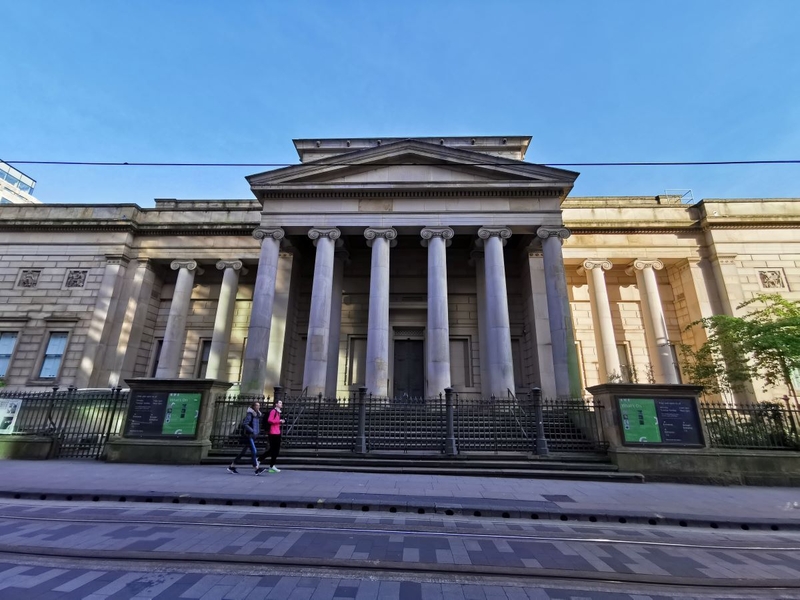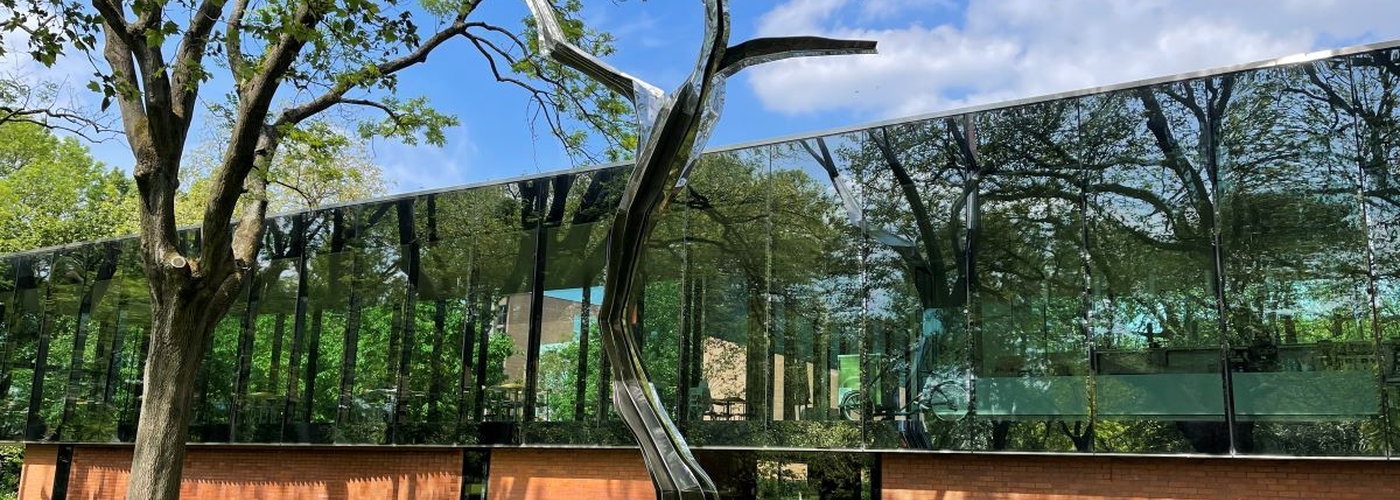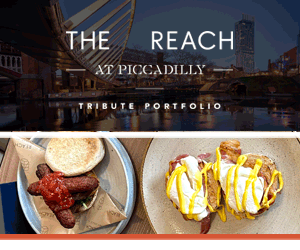Change ahead for the Whitworth Art Gallery and Manchester Art Gallery after 11 years of marriage
It began with Maria Balshaw, now the director of Tate Britain. In 2011 cultural love was in the air and Manchester Art Gallery (MAG), owned by the city, and The Whitworth Art Gallery (WAG), owned by the University of Manchester, tied the knot under Balshaw’s directorship.
There should be an overall director. Lead means lead. You can’t have co-leads
It was good while it lasted and there were happy times but following the disastrous reign of insubstantial successor, Alistair Hudson, who left in late 2022, town and gown (or rather gown and town) decided to go their own way. The WAG left the MAG.
The underlying reason Hudson left was the controversy caused over the Cloud Studies exhibition he brought to WAG and its alleged pro-Palestinian/anti-Israel politicising.

WAG recently advertised for a director with a salary scale of £83,009 to £124,513. Hefty. The date for receipt of applications closed in January with the recruitment process ongoing.
MAG is going down another route dispensing with the idea of an overall director and seeking a ‘Senior Creative Lead’. The salary range is far less than that being dangled in front of a prospective WAG director at £65,550 to £70,785. Applications had to be in by 26 February, so it looks likely there will be an announcement before summer.
The University of Manchester paid the salary of Balshaw and Hudson covering their roles at both WAG and MAG which might help explain the separation, however the official line from Nalin Thakkar, Vice-President Social Responsibility, is different and a fine example of institutional vagueness and obfuscation.
"Following the announcement of the departure of Alistair Hudson last year, the Whitworth and Manchester Art Gallery had the opportunity to reflect on the arrangements that best suited their needs going forward.
“It has been a balanced decision to focus and increase strategic resource and capacity in each cultural institution while strengthening the ties and joint working between the two cultural institutions.
"For example, there is a clear commitment for the new Director of the Whitworth to work in close liaison with Manchester City Galleries and MCC (Manchester City Council), while additionally jointly managing the strategic direction of the Manchester Partnership (an Arts Council England-funded consortium of the Whitworth, Manchester Museum and Manchester City Galleries).
"The recruitment process at the Whitworth began late last year. We are delighted with the quality and breadth of interest in the role. We will obviously make an announcement when that process is concluded."
Good. A balanced decision is far better than an unbalanced decision but nothing specific about the break-up.

A curious angle to the divorce is that MAG has traditionally well over double the visitor numbers of WAG (we’ve asked both institutions for up-to-date figures). So, why the disparity in salary with the less popular gallery paying way more than the more popular? It must be down to that new position of Senior Creative Lead at MAG and not the replacement at MAG of a director by a director.
The official line is: ‘Manchester Art Gallery is to appoint a Senior Creative Lead to help steer the gallery and play a key part in shaping the way its collections are used and understood by the many thousands of local, national, and international visitors who flock to the gallery each year.’
‘The Senior Creative Lead will co-lead the gallery alongside the existing Senior Operational Lead, and will have specific responsibility for the development and delivery of the public programme across all gallery sites, and the development and use of the city's world-class art collection for the benefit of the people of Manchester.’
Councillor Luthfur Rahman, Deputy Leader Manchester City Council, says: "A special gallery clearly needs a special person at the top, someone who can inspire and lead its creative direction, and deliver on the ambitions we have for the gallery and its collections. So we're looking for a creative leader with a passion for collections and people, who embraces methods of engagement beyond conventional modes of display and exhibition.”
Again, it is hard to interpret what this cascade of bureaucratic wordage means.
One very respected and very experienced existing gallery director, who wishes to remain anonymous, told Confidentials.com: “The role of Senior Creative Lead sounds like penny-pinching. There should be an overall director. Lead means lead. You can’t have co-leads. Remember when Gerard Houllier and Roy Evans were made joint managers at Liverpool Football Club. It was a disaster, lasted three months. You can see an instance were the Senior Creative Lead will want one thing and the Senior Operational Lead wearing their Town Hall hat will look at the budgets, and say no.”
Talk to other people in the art world and they nearly all feel the same about the demotion of the chief role at MAG from director to one of a shared responsibility as Senior Creative Lead.
It seems that, on balance, remember everything has to be balanced, WAG is making a sound move and bringing back focus to their very different collection, location and ‘mood’. MAG meanwhile, or rather the City Council, seem to desire a complex management arrangement that could lead to confusion but might save money. Time will tell, but what is certain is that, after the first years of happiness, the eleven-year marriage of MAG and WAG is definitively over.
(Carry on reading below the next image for an example of unbalanced curatorship)

And another thing - MAG meets mad
Councillor Rahman talking about the role of Senior Creative Lead mentions embracing ‘methods of engagement beyond conventional modes of display and exhibition’.
He's missed what's been happening in MAG already. ‘Conventional modes of display’ were abandoned with Alistair Hudson’s tenure at MAG and WAG. Modern curatorship seems to believe the word 'conventional' is a pejorative just as it thinks if the word 'progressive' is repeated it is therefore automatically progressive. Take the rant that accompanies the Empire Marketing Board’s Union Flag poster from 1930 currently on display.
The rant comes from MMU lecturer, film-maker, artist and so on, Kooj Chuhan.
It reads: ‘In 1930 Britain dominated vast areas of the globe: around 70 countries were aggressively controlled through invasions and colonisations. Entire economies and their resources were forced to serve the needs and polluting industries of the UK. Sustainable systems were destroyed and appropriated, tens of millions died and livelihoods were made precarious. All of this was justified by the British sense of racial superiority.
‘The nationalistic image celebrates incoming goods to the centre of Empire, the Union Jack. Each arm ends with a signpost indicating one of a number of brutally colonised geographies. The poster unwittingly depicts the founding causes and economic relations of today’s climate crisis, marketed to all as central to British identity. It is a legacy which still needs to be unpacked.’
Chuhan has done all that unpacking - in his mind.
Whether one agrees with his screaming invective or not, the fact it comes without any sort of balancing comment is disturbing in a publicly-funded institution. There is nothing else written about the striking image from the Empire Marketing Board, no context, nothing about the designer Hugh Williams, just a highly subjective, simplistic and almost childish rant.
Chuhan's words read like angry social media not anything you should find in a curated space. Maybe he expected another perspective to be placed next to his because that seems the only justification for him to write them.
So were there any curatorial standards applied here? His words could be from the worst of Twitter or Facebook.
Is this good enough in a publicly funded gallery?
Is this what Councillor Rahman is expecting of MAG's Senior Creative Lead?
















